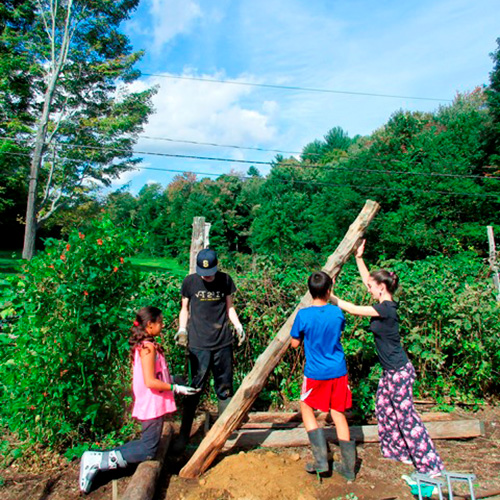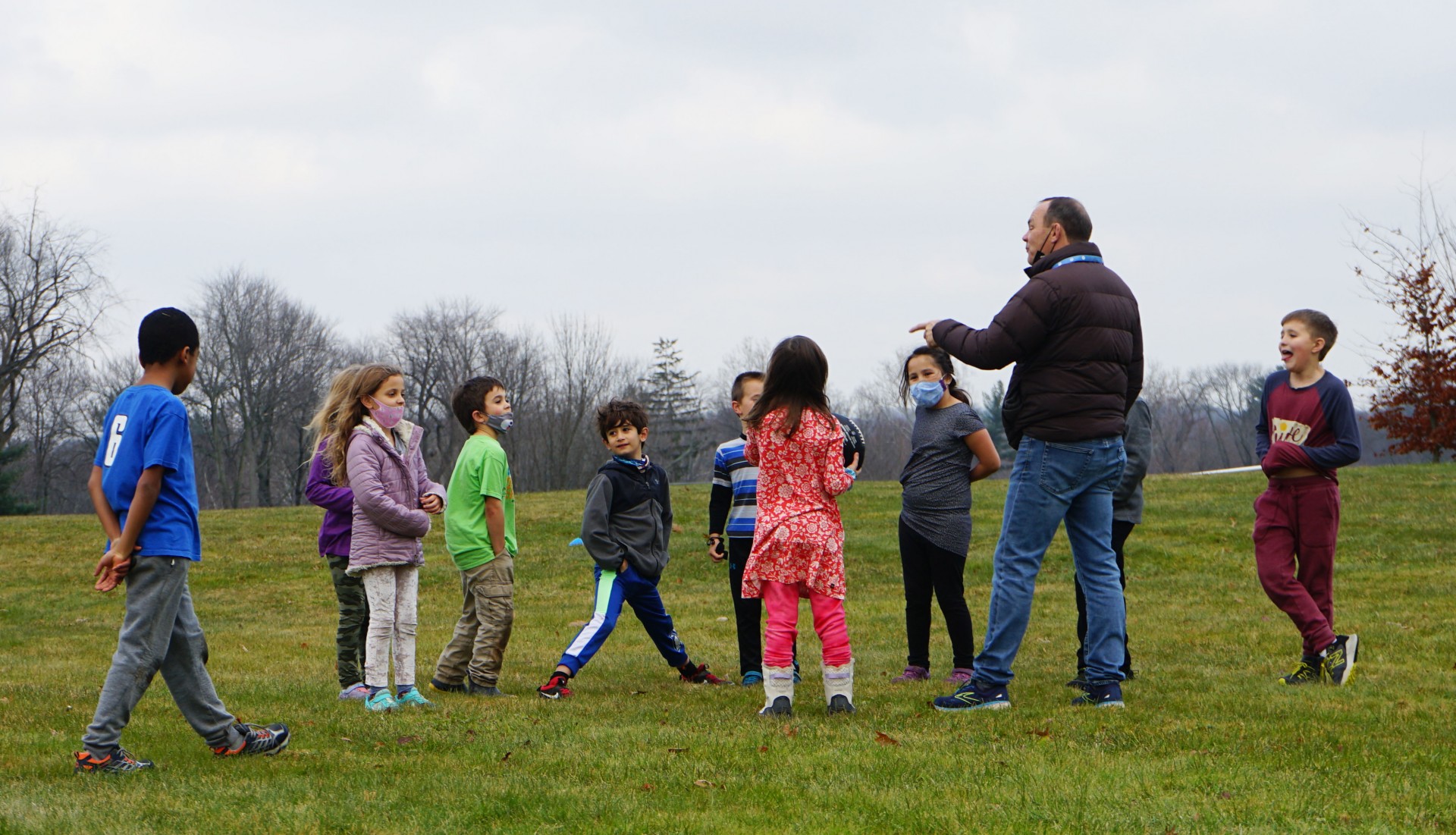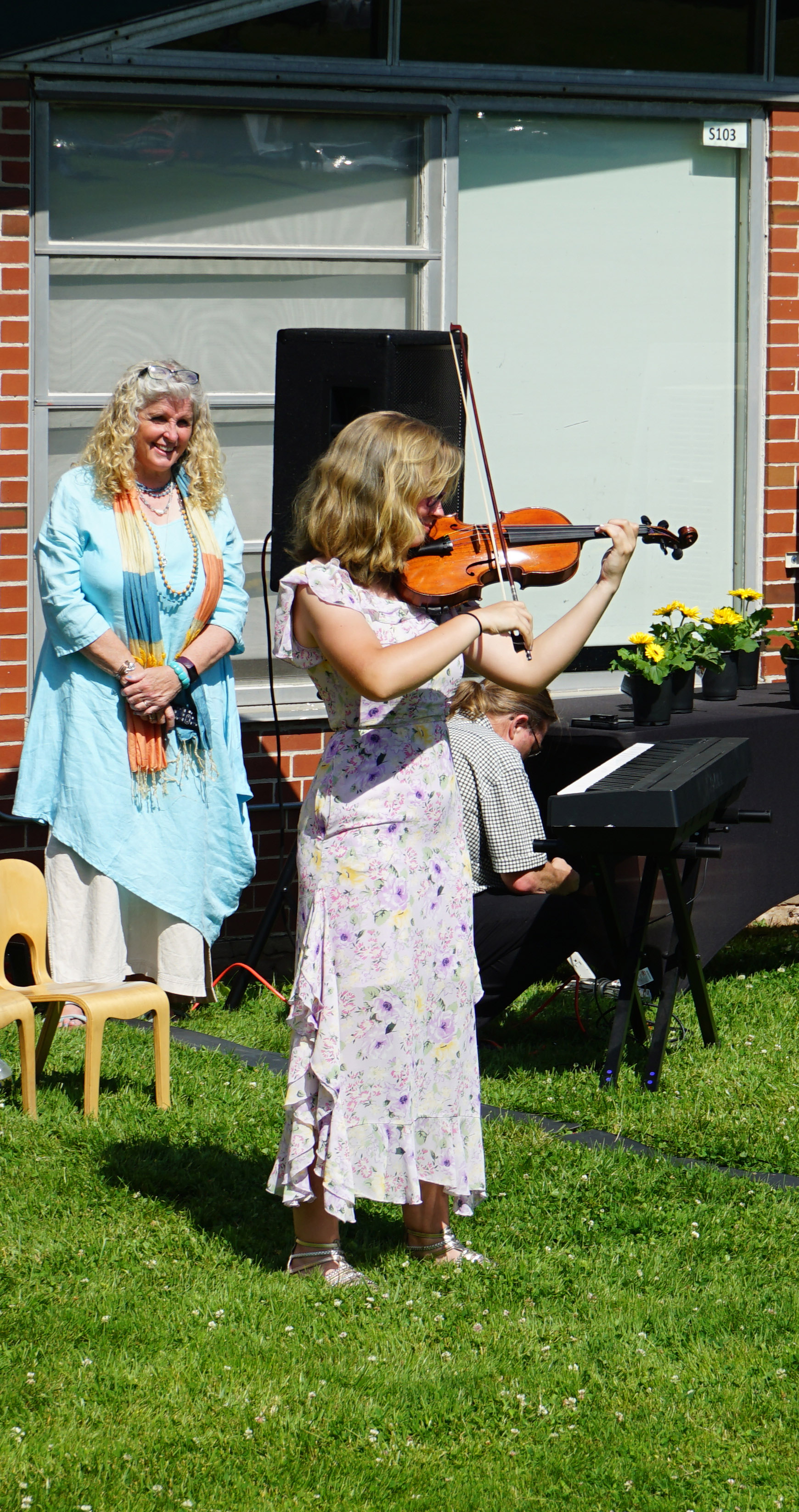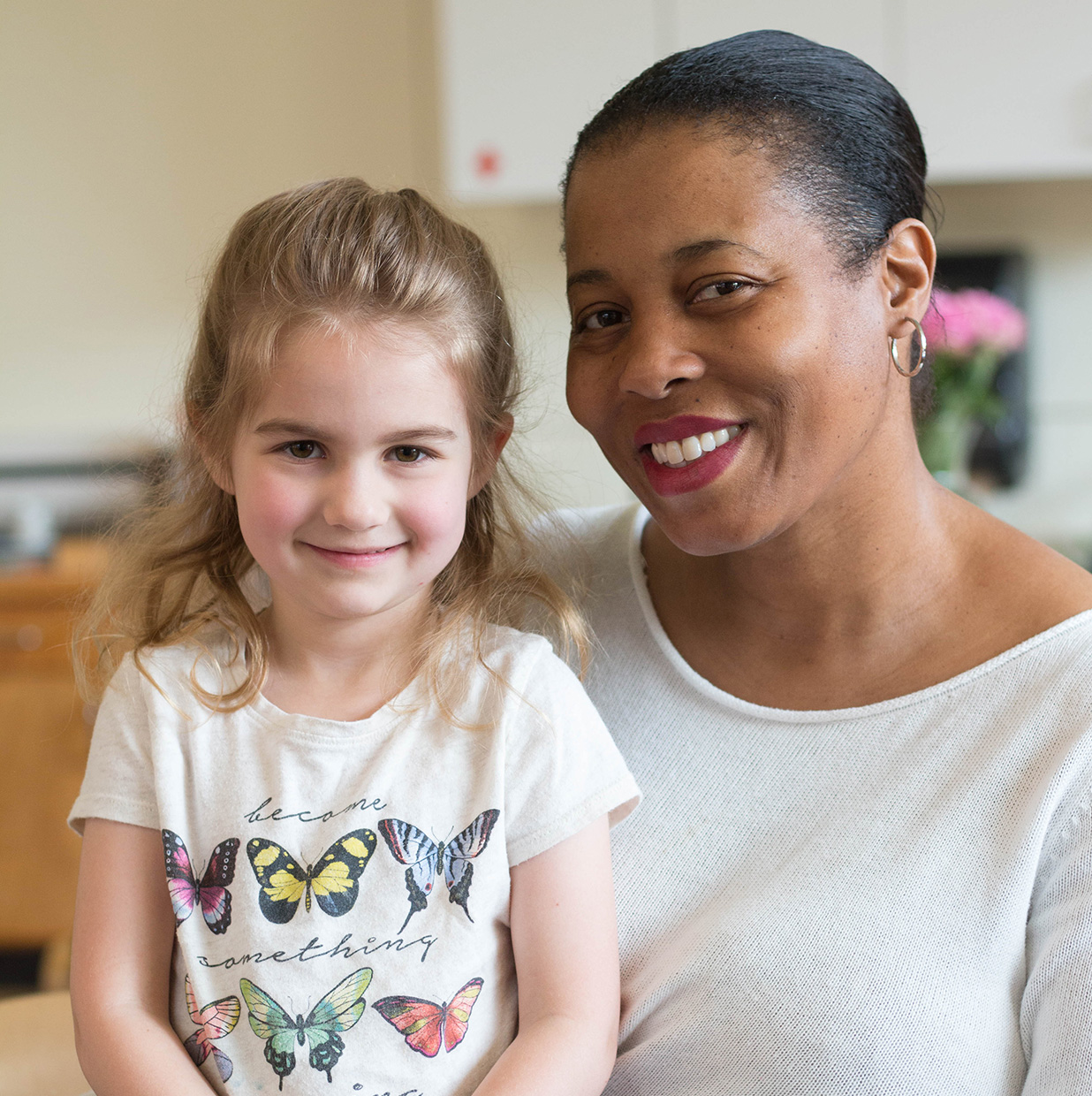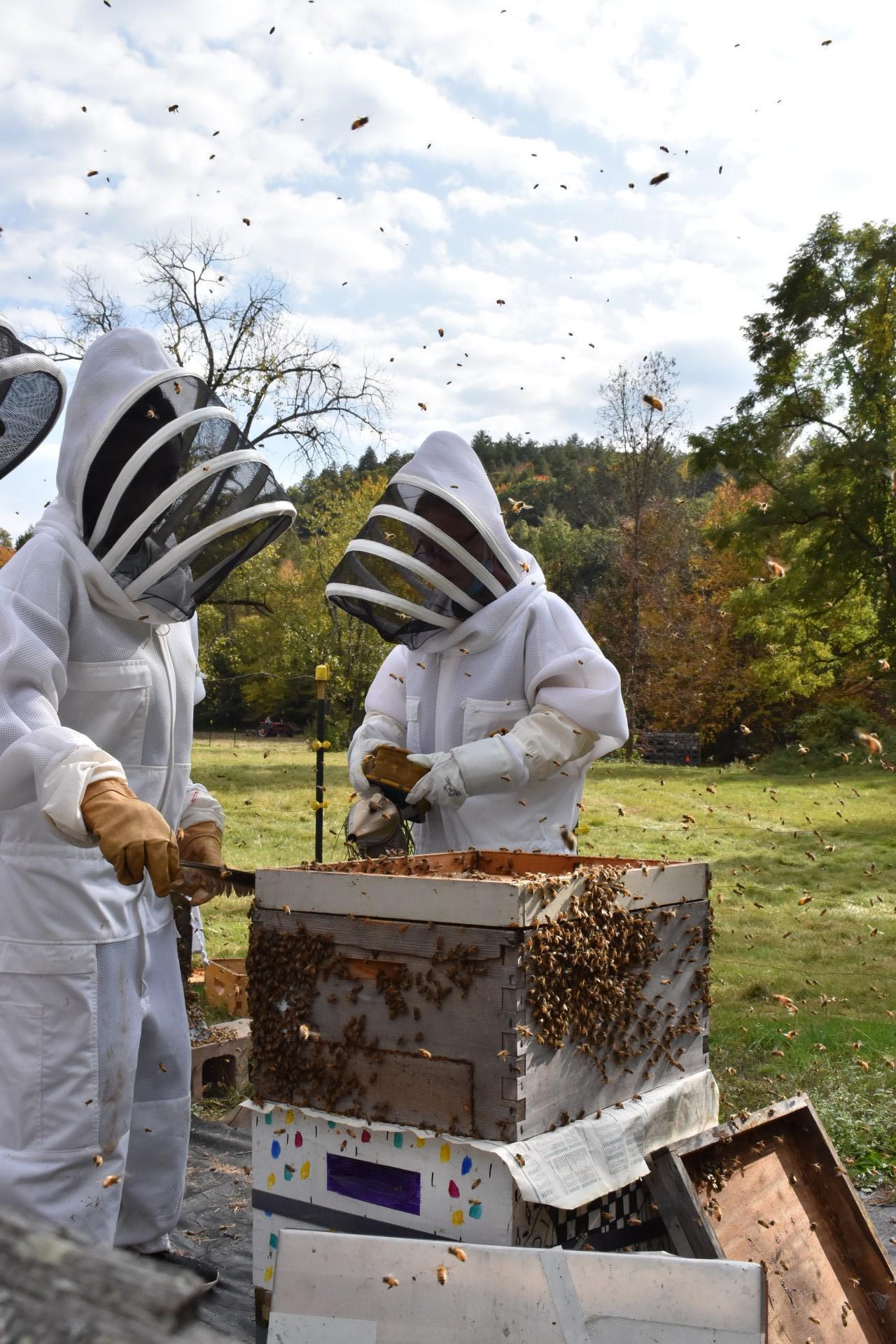Scholarship. Creativity. Collaboration. Leadership. Adaptability.
These are the attributes of our Elementary children who are ready to take on challenges
and become leaders in our community.
Elementary Program
With a stronger sense of themselves as individuals, children in our Elementary program work together and learn to see the world from different perspectives. Through materials, curriculum and targeted activities, our AMI-certified teachers cultivate negotiation skills, trust, and a strong sense of empathy.
MSGH offers a Lower Elementary Program for children ages 6 to 9 and an Upper Elementary Program for ages 9 to 12. Both are designed to appeal and respond to the universal characteristics of elementary-age children, including their:
- overwhelming curiosity;
- ability to think abstractly and use logic and reason;
- strong and active imaginations;
- preference for learning material in multiple ways, instead of by rote repetition;
- great desire to expand their social skills and work with others;
- strong sense of fairness and justice.
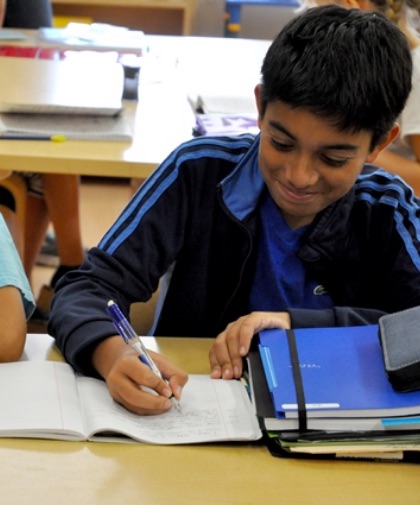
Individualized Learning
The ‘standardized curriculum’ - the hallmark of conventional education - divides knowledge into discreet, compartmentalized subject areas and limits the child to learning ‘pieces and parts’ in a prescribed order, at a prescribed pace. In contrast, a Montessori education gives Elementary children a broad, inter-disciplinary context for learning that allows each child to learn at his or her own most natural and productive pace. Students can advance rapidly in areas of strength while taking extra time to master and revisit material that may be more challenging. In Montessori’s individualized, mixed-age setting, the child works freely without feeling (or being labeled) either ‘ahead’ or ‘behind.’
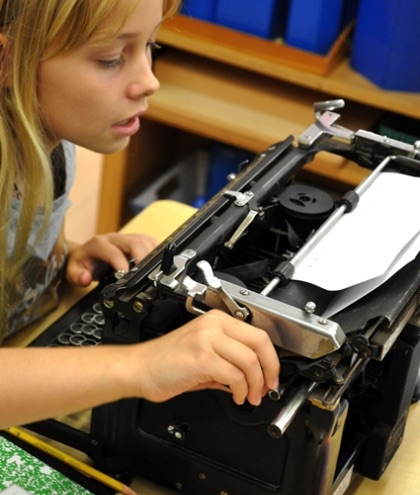
Interdisciplinary, Self-Directed Learning
Students are provided with a broad, interdisciplinary context for learning through presentations of Montessori’s “Great Lessons,” which typically are shared with larger groups in a formal, storytelling format. More detailed information is presented in small group “Key Lessons.” Key lessons pave the way for deeper learning by inspiring student-initiated research projects and independent study, which can be pursued in small groups, individually, or with a friend.
Lessons in subject areas such as mathematics, language, history, geometry, geography and biology are presented in small groups or to individual students. Lower Elementary children typically spend more time with subject-specific manipulative materials, while older children work at increasingly higher levels of abstraction. Art, music, and Spanish are integrated seamlessly into the student’s daily work.
Whenever possible, the teacher endeavors to present lessons when a child is at peak readiness – one student will have seen an older child do something more advanced and want to know more, while another will realize that new skills or knowledge are needed to make progress on a favorite project. In all cases, lessons are presented at a level of challenge tailored to the student’s abilities and interest.
The Montessori Elementary teacher actively follows, supports and records each child’s progress and ensures that all children cover the full curriculum over the course of the three-year Lower or Upper Elementary program. MSGH students are expected, at a minimum, to master the components of the public school curriculum, and in addition, are exposed to an open-ended Montessori curriculum that encourages them to explore their interests in depth, make connections across subjects and experience the thrill of discovery.
Social Learning
The mixed-age classroom provides children with many opportunities to find work partners (younger, same age, or older) who share their interests or learn at a similar level and pace. Age differences also create unique learning opportunities: older children can consolidate their knowledge by mentoring and teaching younger children and can strengthen their leadership skills by modeling appropriate behavior, mediating conflicts and leading large projects. Younger children, in turn, can find inspiration for higher-level studies by seeing what their older classmates can do, and often teach themselves by ‘tagging-along’ with older, more knowledgeable classmates.
Learning in the Community
Students are encouraged to extend their studies and research projects beyond the walls of the classroom and to engage with the wider world of local business, service organizations, libraries, museums and natural habitats. Elementary students regularly plan their own “going outs” to find answers to their research questions or to serve the community in ways that have personal meaning.
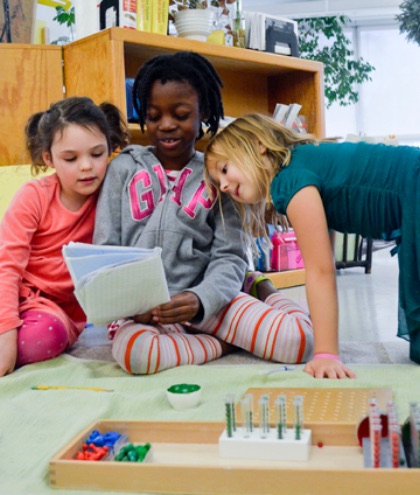
Physical Education at MSGH
Our bodies need to keep moving and we need to find time for meaningful play with our peers. Fact: the greater we understand how to play a particular game, the more we will enjoy it and want to keep playing, even as an adult. AMI agrees and developed a certificate program called Montessori-Sports. In addition to soccer, several other sports are introduced at MSGH including pickleball, platform tennis, floor hockey, handball, touch football broomball, along with noncompetitive activities such as hiking, yoga and fitness. Physical Education complements the inclusion of movement that is always present in the daily Montessori schedule, under the observant eye of a teacher. Teachers have important oversight regarding the development of the Physical Education curriculum as part of the child’s development.
Physical Education begins with a prepared environment (physically and psychologically), control of objects, control of the body and a leader who guides, observes and to some extent, controls error. Our classes begin with yoga poses. We then do a battery of exercises including running, side to side, backwards, skipping and another handful of stretches. Student’s individual success is readily apparent due to repetition and sheer determination. For instance, running forwards is no problem, but skipping backwards is much more challenging and students are learning how to do it! The instruction or lesson part of the class attempts to breakdown skills. For example, if you kick a soccer ball with the side of your foot with a locked ankle and bent knee, you will be more successful and therefore gain enjoyment from the game! Class finishes with a small sided game with carefully selected teammates and opponents (control of error) to reinforce participation and repetition. We introduce modified games such as soccer baseball and soccer golf. These games intentionally slow the activity down, without pressure of an opponent, so the student can observe and really try on their newly acquired skills. This approach provides a healthy balance between competitive and non-competitive activity and can be applied to a variety of sports.
On our West Hartford Campus, most classes occur outdoors on the large field on top of the hill. Our neighbors at the American School for the Deaf have provided outstanding indoor space in the adjacent Cogswell building during the cold months.
Article by Bill MacLean, Physical Educator
Music Program at MSGH
With the sights of bright red clothing and the sounds of clanging, whether in a field, under a tree, or in a barn, music is bringing MSGH students together - reaffirming community, fostering creativity, and making connections. Most music classes have been outdoors this fall, providing a setting that inspires and brings joy. Many children associate the outdoors with beauty and wonder – with exploration and play. Nature and wide-open space has allowed students to stretch their bodies as well as their imaginations.
COMMUNITY
Coming together to share music has reinforced our sense of ensemble. Students balance individual ideas with the creative contributions of those around them. All levels have been using body percussion challenges to sharpen their inner rhythmic skills while coordinating to be part of the “musical machine” – each playing a part. The Adolescent students had rehearsed as a “Band in the Barn” – balancing each other’s musical contributions to perform a bilingual version of “Stand by Me." With multiple listenings to Bob Dylan’s “Blowin’ in the Wind”, students in Upper Elementary interpreted the deep meaning behind each verse and linked it to the world they live in today. They then composed their own original lyrics to the tune in an effort to expand on Dylan’s theme. With wide open spaces, children in Lower Elementary have been able to do (modified) folk dancing - from the Danish “7 Jumps” to a school favorite, “Sasha”. As students join together under the sky for music, they continue to sing, dance, play, and listen – together.
CREATIVITY
The breadth of music embraces the notion of creativity. Nurturing creativity requires patience and space – space in terms of time, but space in terms of making room for ideas of all kinds. At times, we respond to music kinesthetically – other times, we discuss and examine – and yet, at other time, we explore and experience. Whether creating new dance moves for “Pata Pata” in the field at Millstream Farm, or Upper Elementary improvising jazz “scat” solos after being inspired by Louis Armstrong, Ella Fitzgerald, and Mel Torme. Lower Elementary children explored the book, “In the Space of the Sky”, through creative movement and interpretation as Debussy’s “Claire de Lune” accompanied their movement. Voice, body, and instruments all are tools for expression.
CONNECTION
Music can be a lens through which to view ourselves, other subjects, and the world. From creating a playlist for the book, “The Giver”, to singing songs in Spanish, the Adolescent students’ subject areas overlap and complement each other. Music can add sound and dimension to the literature students are studying. Listening to the Upper Elementary book, “Saint Louis Armstrong Beach” prompted some students to recall learning about Trombone Shorty and his life growing up in New Orleans. Upper Elementary considered the composer’s point of view – the clouds as inspiration for music. Students then delved into studying a bit about Jazz, jazz artists, and jazz techniques. Our lives are not compartmentalized, nor should our learning. Lower Elementary has been making connections of nature to music. Cloud formations moving about on a particularly windy day prompted a relaxed ending to classes where students watched the ballet in the sky as they listened to “Cumulus”.
Music at MSGH brings us together as a community. Music at MSGH inspires us to create rhythm, melodies, lyrics, and movement. Music at MSGH connects us to each other – to other content areas – to our surroundings - to our shared global experiences. The combination of Community, Creativity, and Connection allow for meaningful exploration and growth. Keeping Listening – that is the key. Open Ears. Open Hearts. Open Minds.
Article by by Colleen Casey-Nelson, Music Guide
Elementary Students Going Out Into the Community
MSGH Elementary students in the news- WeHa.com
'Montessori Students ‘Adopt’ West Hartford Family, Raise Funds through Jog-a-Thon'
Article by Ronni Newton
A West Hartford mom and her two children had their wishes come true this Christmas, thanks to the hard work and generosity of students at the Montessori School of Greater Hartford, and their teachers and families.
Elementary Material Highlight
Read article here, click here!
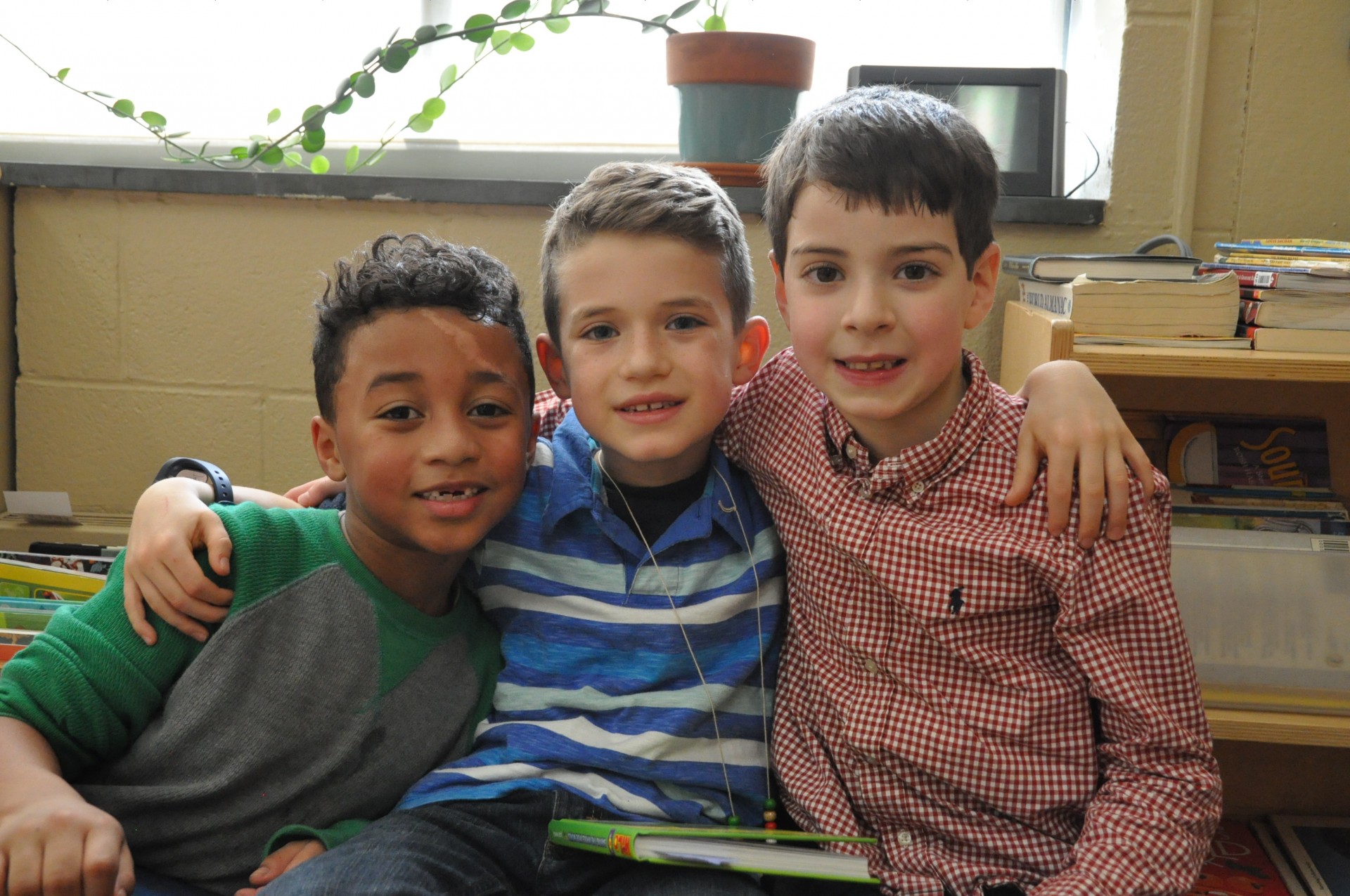
The Social and Moral Shift from Elementary to Adolescence
The elementary years are an important in that they encompass a time of intense intellectual growth and the ability for moral reasoning. Montessori feeds and nurtures these by sowing as many seeds of culture as possible so as to develop strong foundation for the work of adolescence.
Parent Observations, Student Visits
Parents of prospective students are encouraged to experience a working Elementary classroom for themselves by planning a visit during the school year. Visiting parents receive a full tour of the school and observe the classroom during the morning work cycle. Prospective students join the classroom for a minimum of two full days as part of the admissions process.
Program Details
Teachers: Our Elementary teachers have Masters-level educations and have also earned diplomas from accredited Association Montessori Internationale (AMI) Training Centers. MSGH’s AMI-trained Spanish teacher visits the classroom regularly to converse and present Montessori lessons in Spanish.
Full-day and All Day Programs: The school day begins at 8:30 and ends at 3:15. An extended care program is available from 3:15 to 5:30, during which students may work with classroom materials, read, engage in developmentally-appropriate games and crafts, and enjoy outdoor play. No extended day program at this time.
Early Morning Care: Early morning care is available from 7:30 to 8:10.
Transition: One of the most frequently asked questions of any Montessori school is: How will children adapt when they transition to a new school? What we have seen is that students successfully transition to the next level and consciously build on their Montessori experience, finding it has given them a solid academic base, along with a diverse set of skills, such as: time management skills, collaborative work skills, leadership skills and problem solving skills. Other observations are that Montessori students have faith in adults, display an understanding of community, and a willingness to do community service. For more information, check out life after MSGH. If you have more questions about this or other aspects of MSGH, please feel free to contact us.
